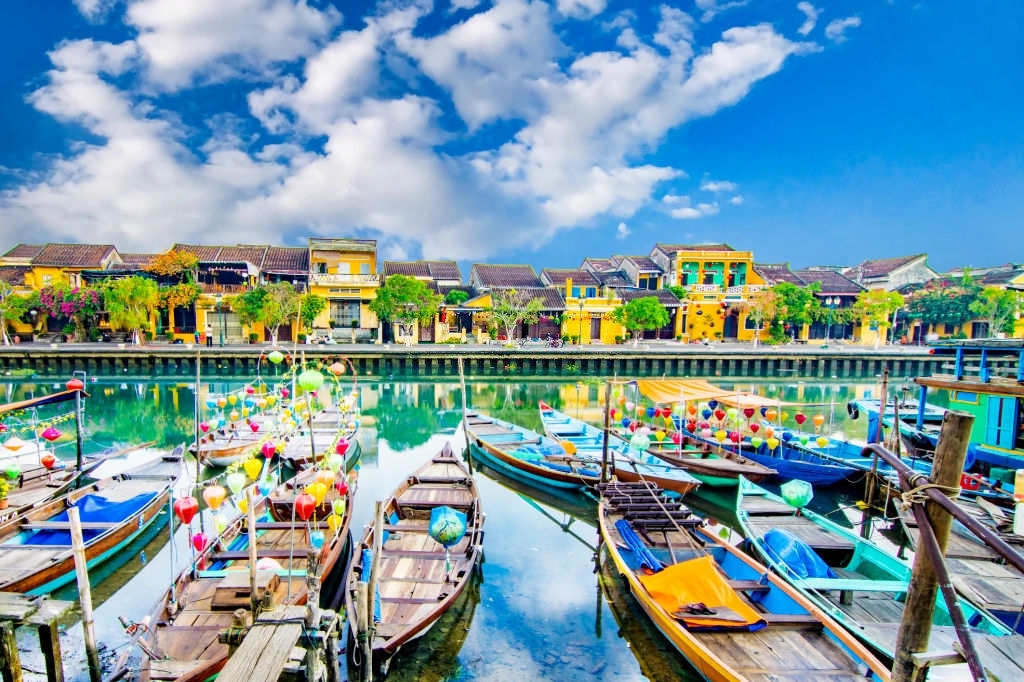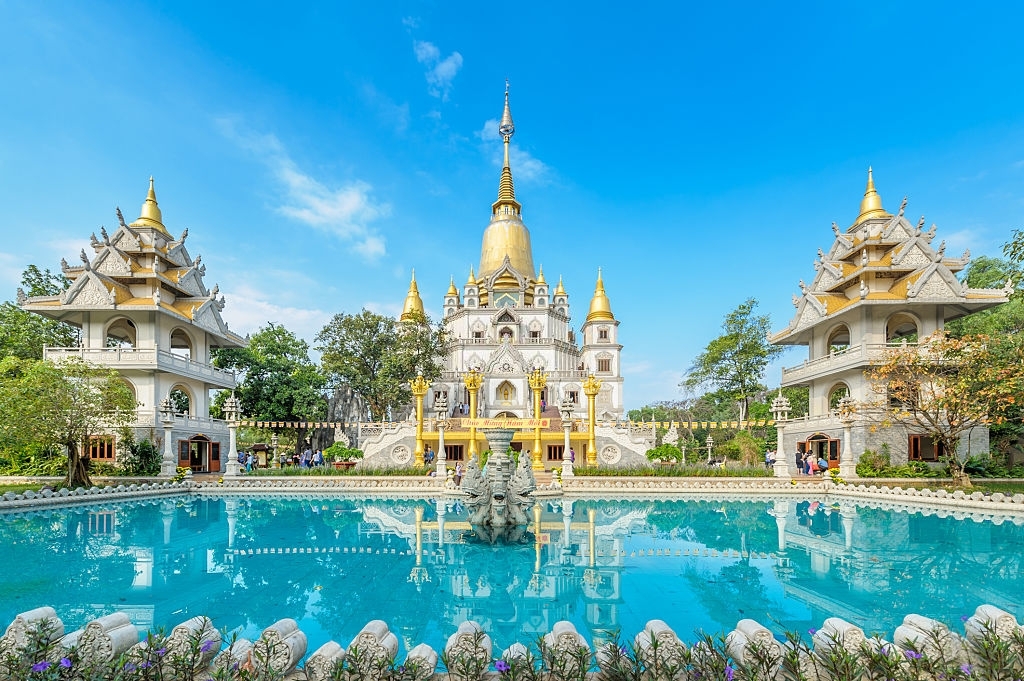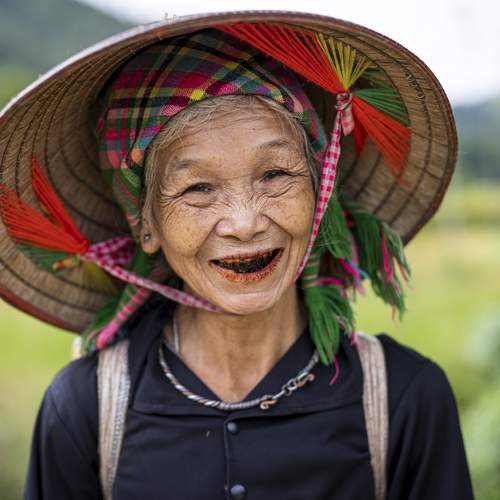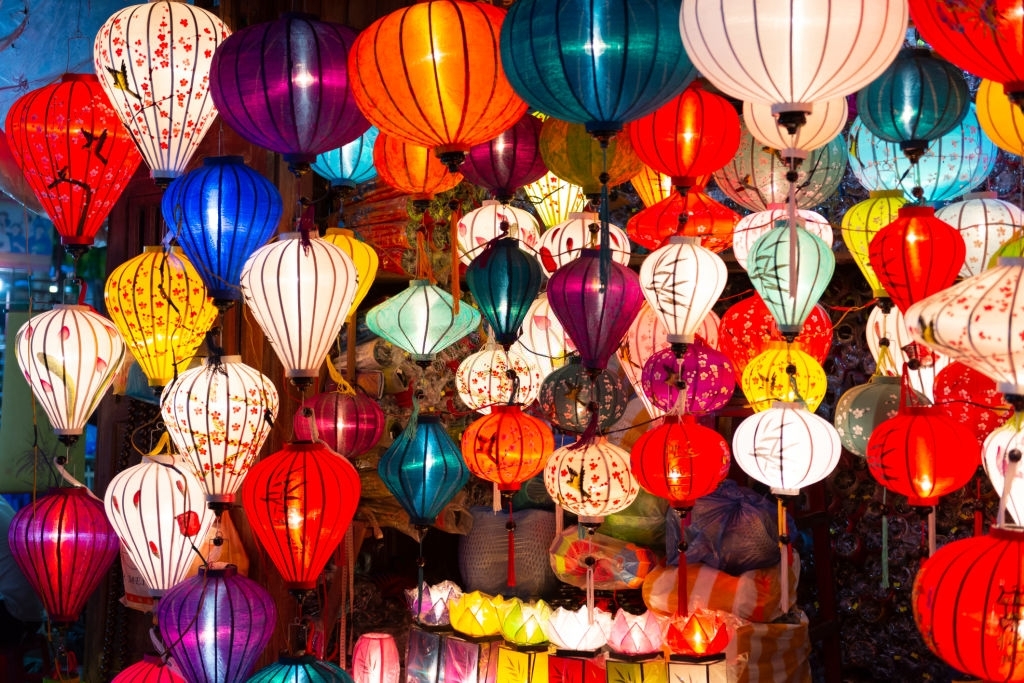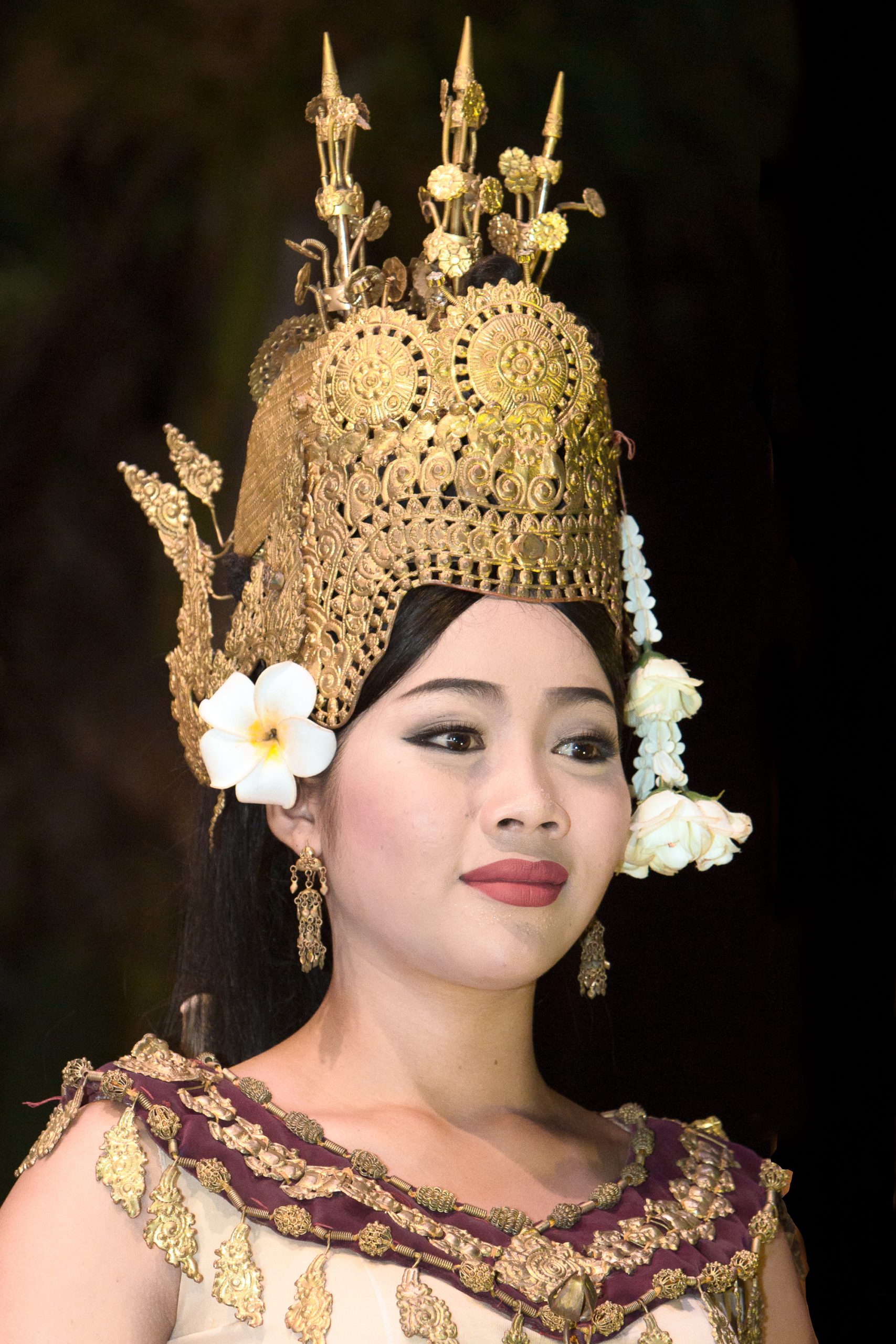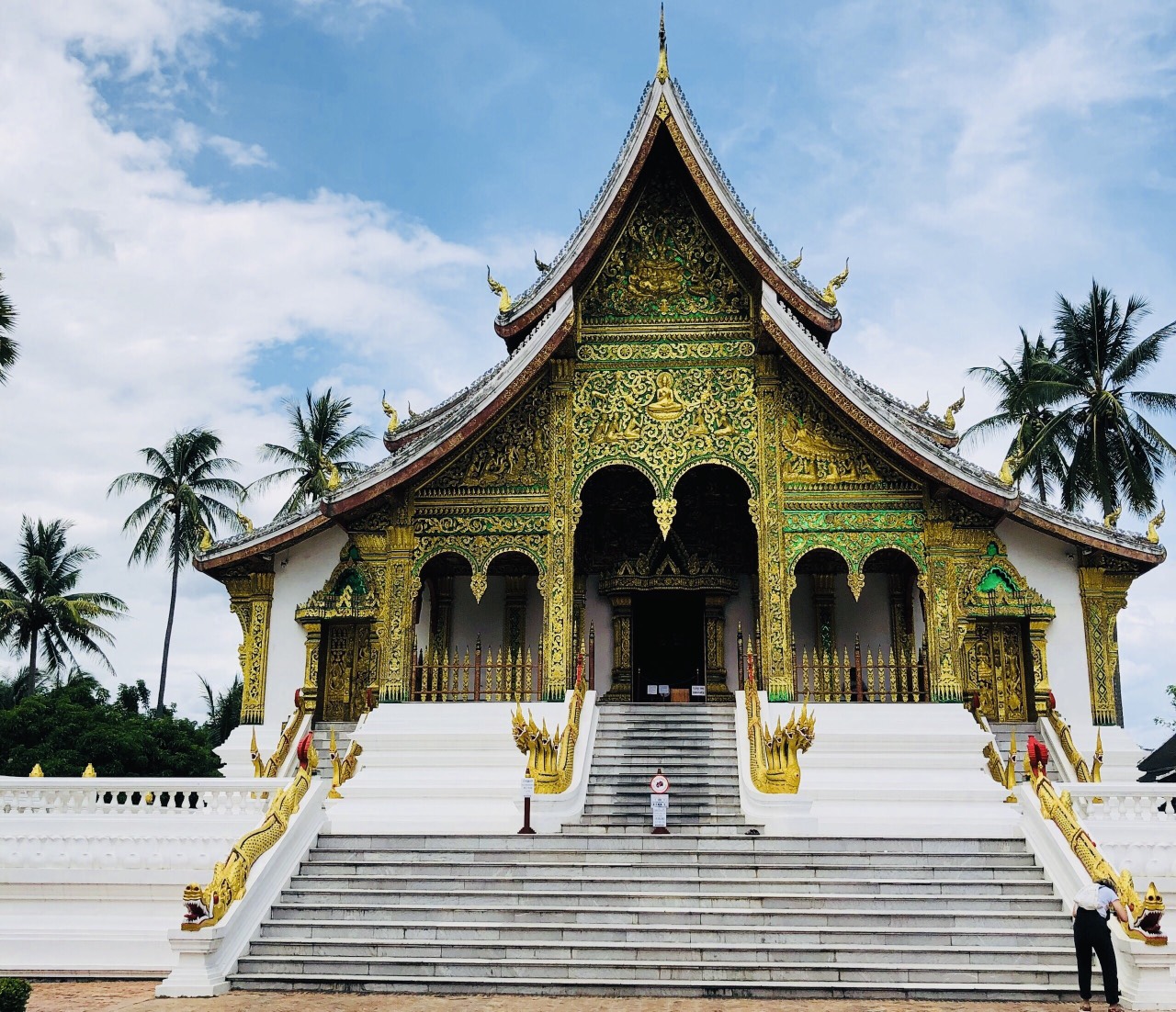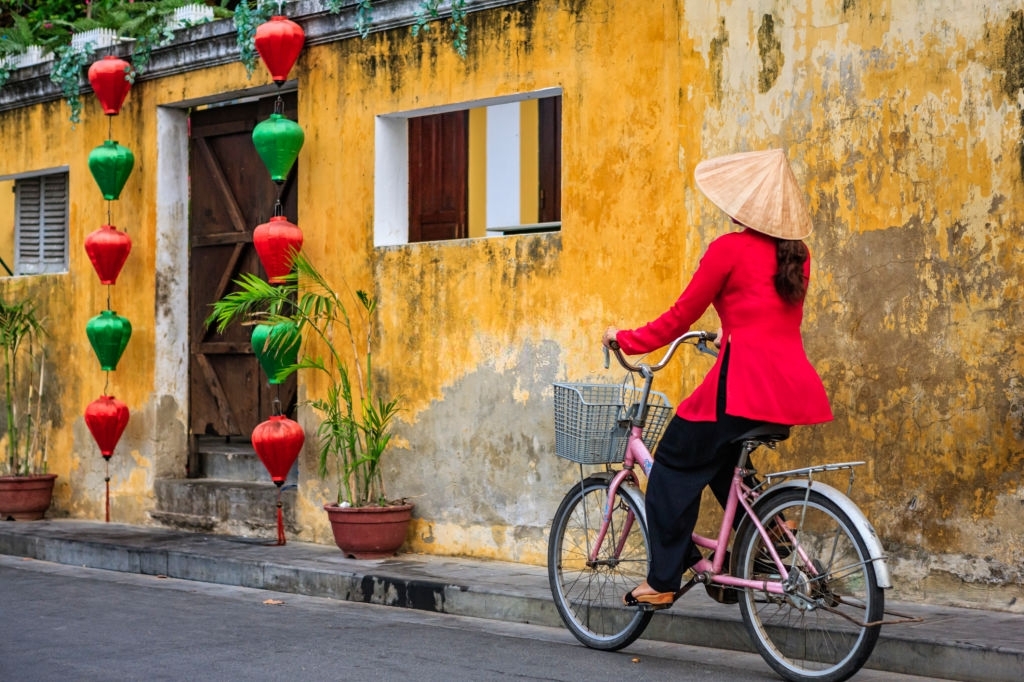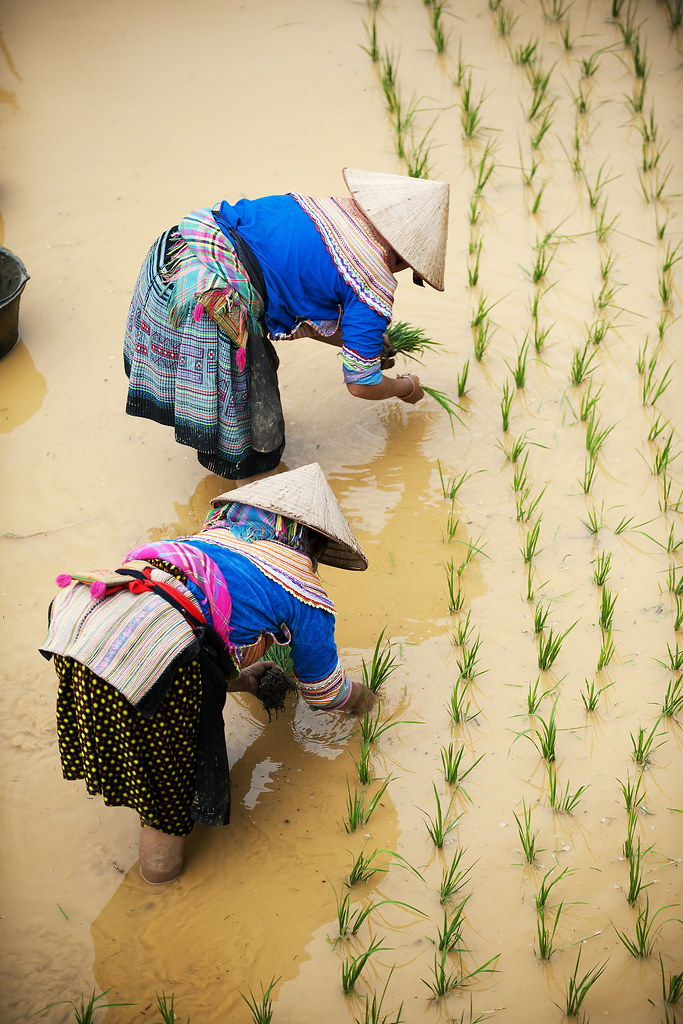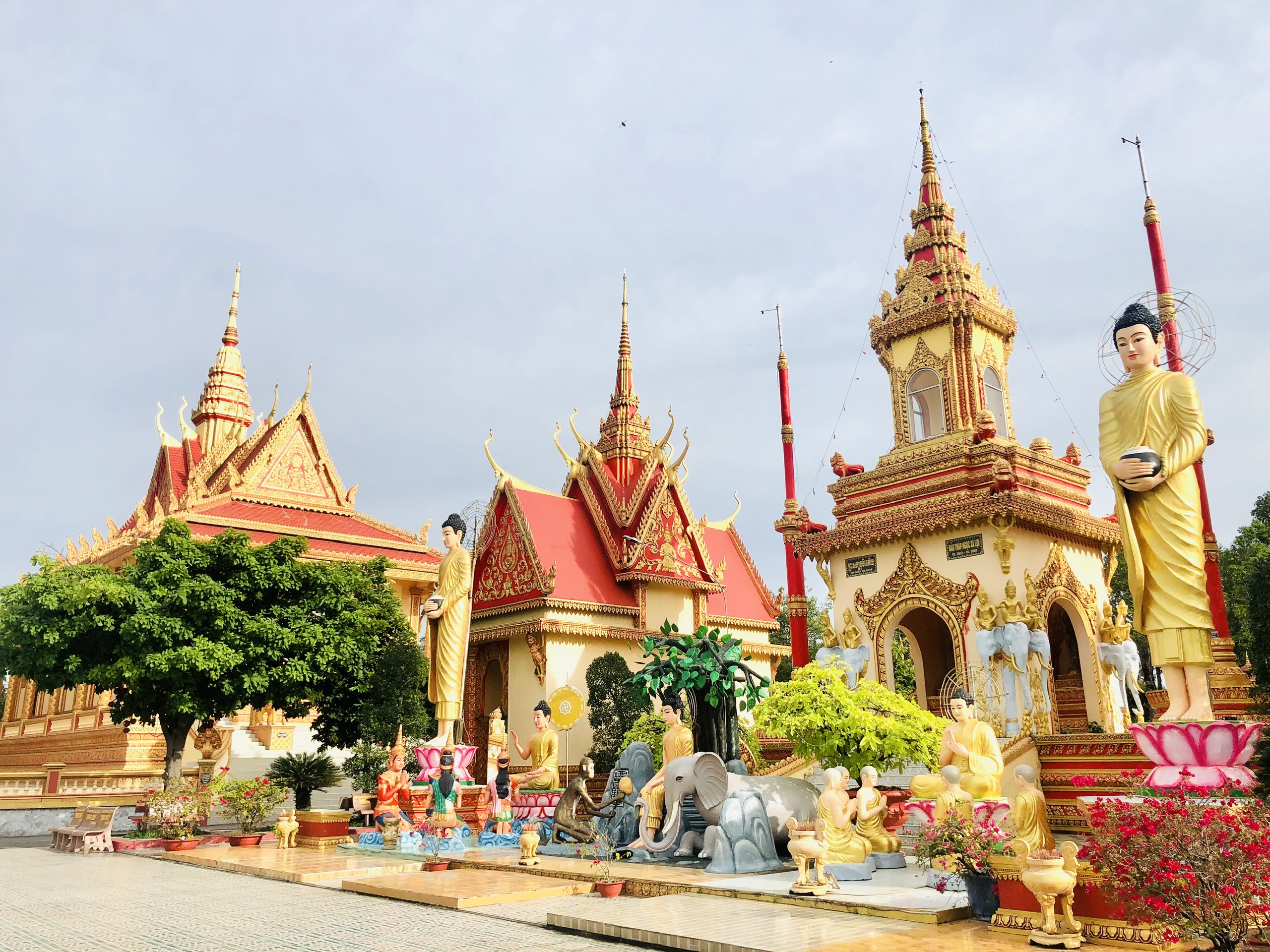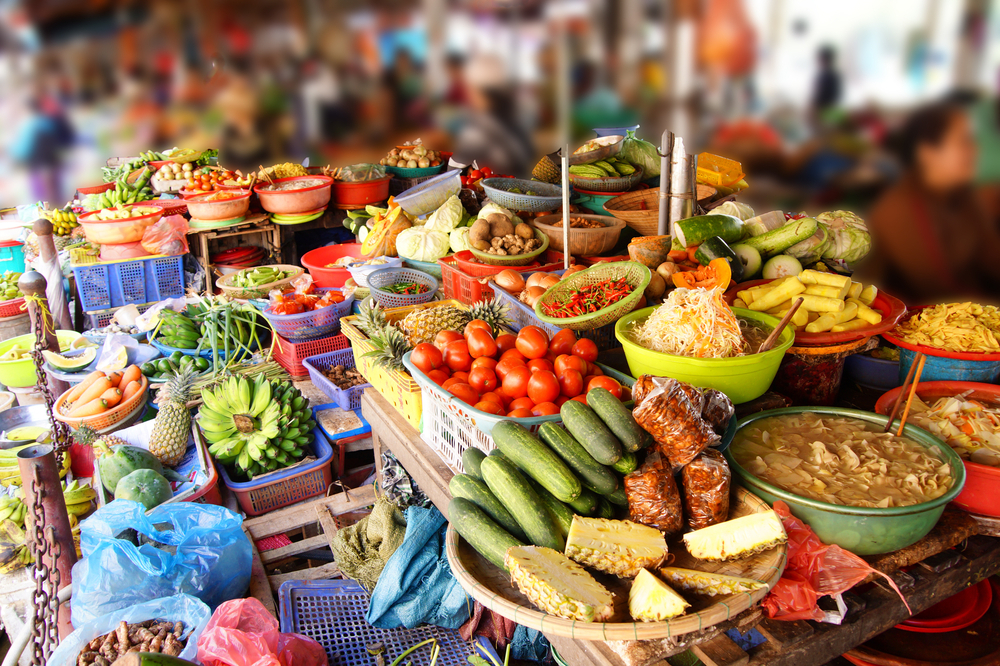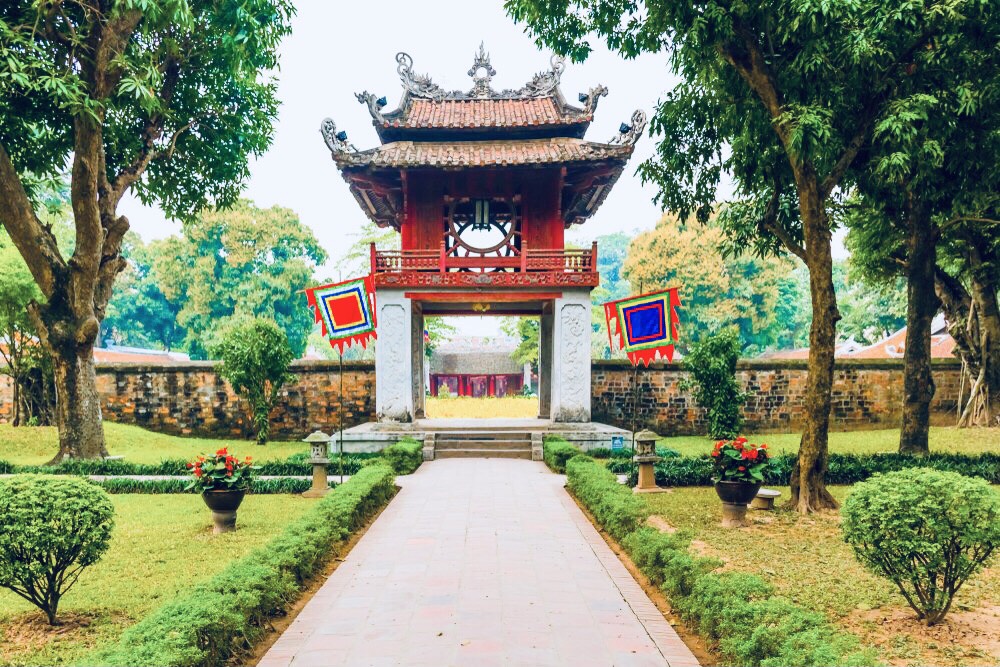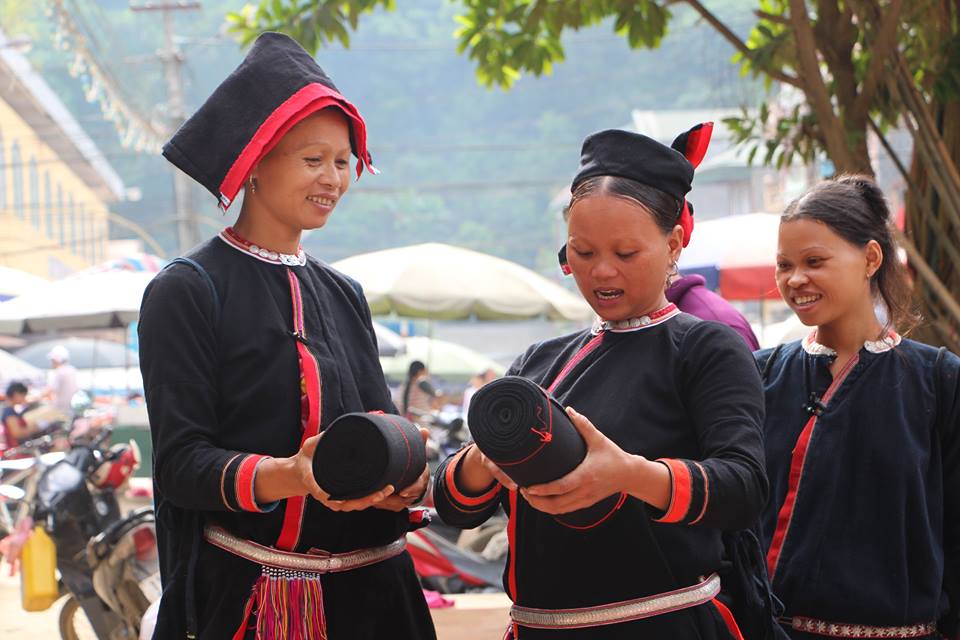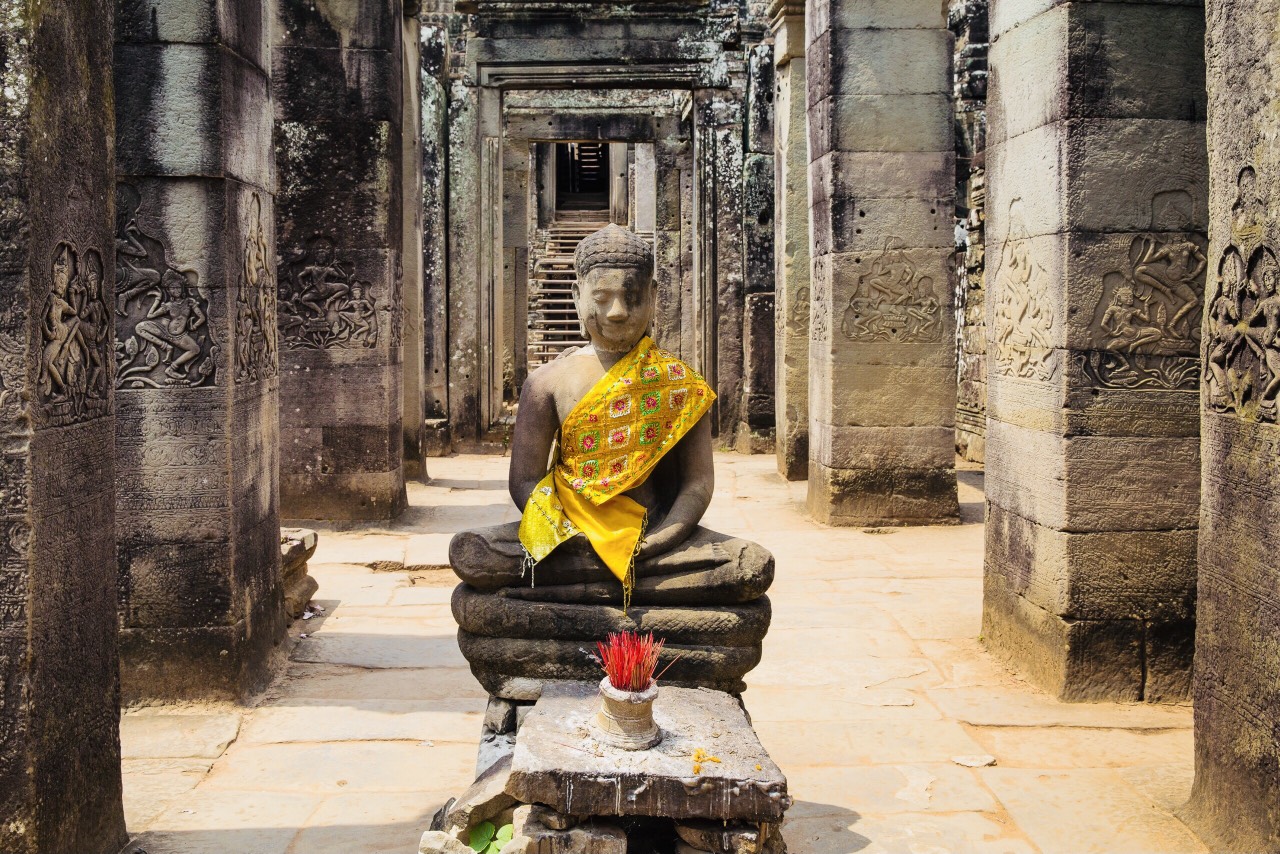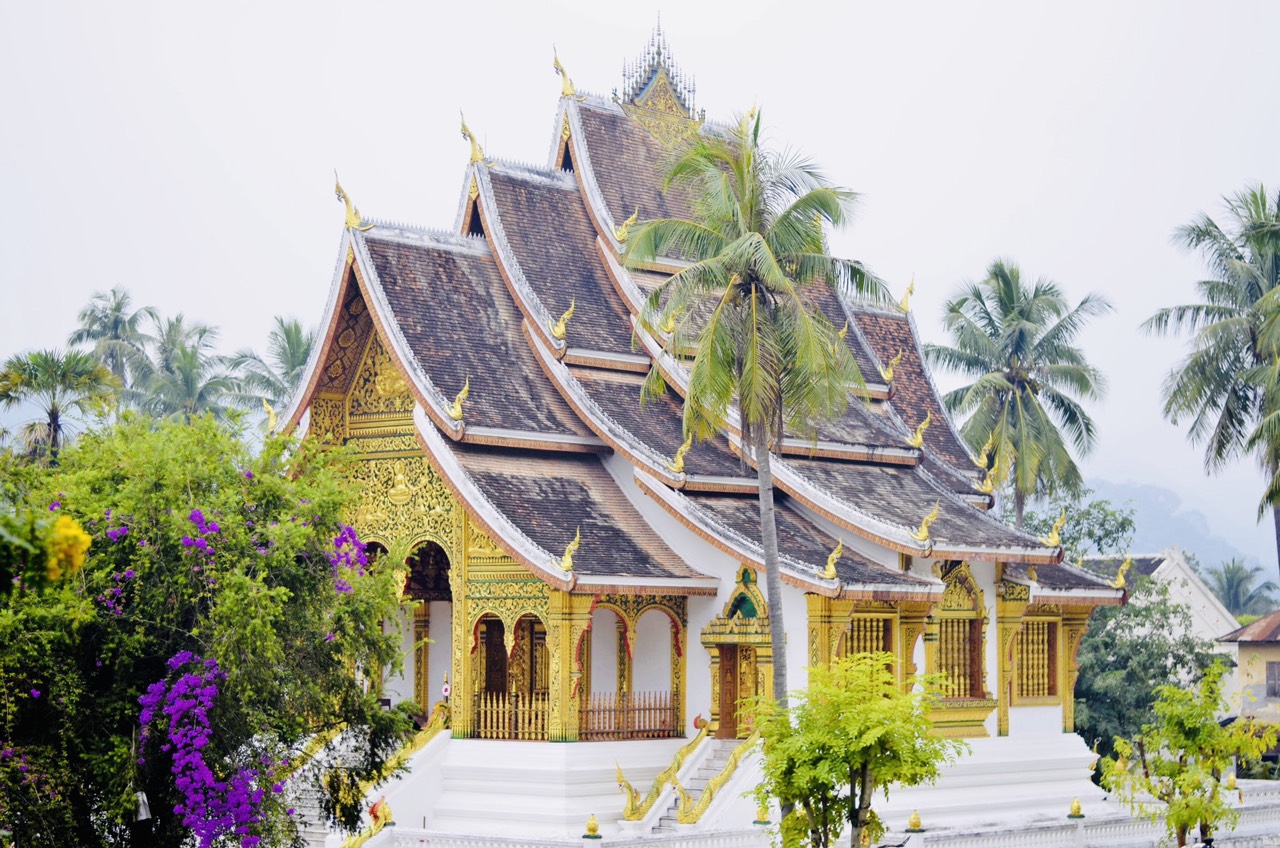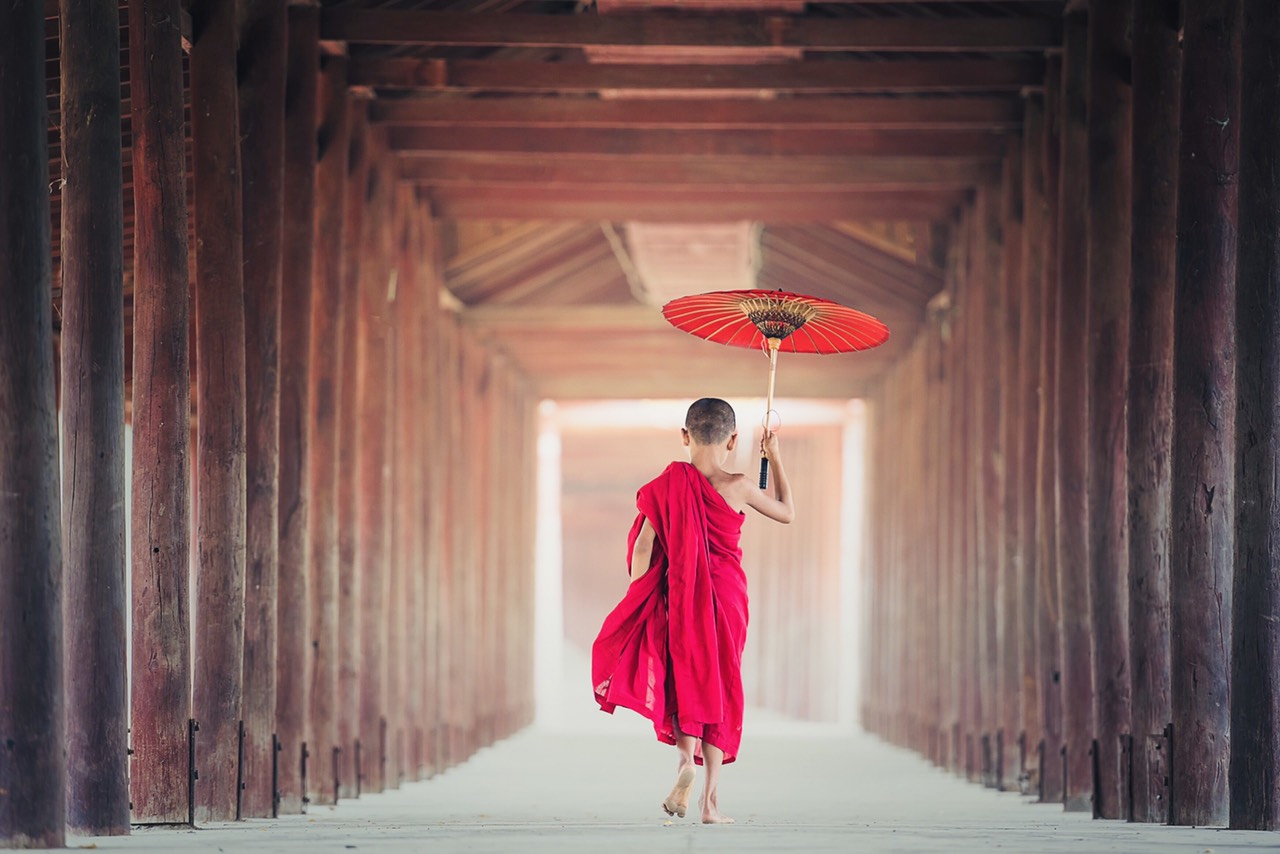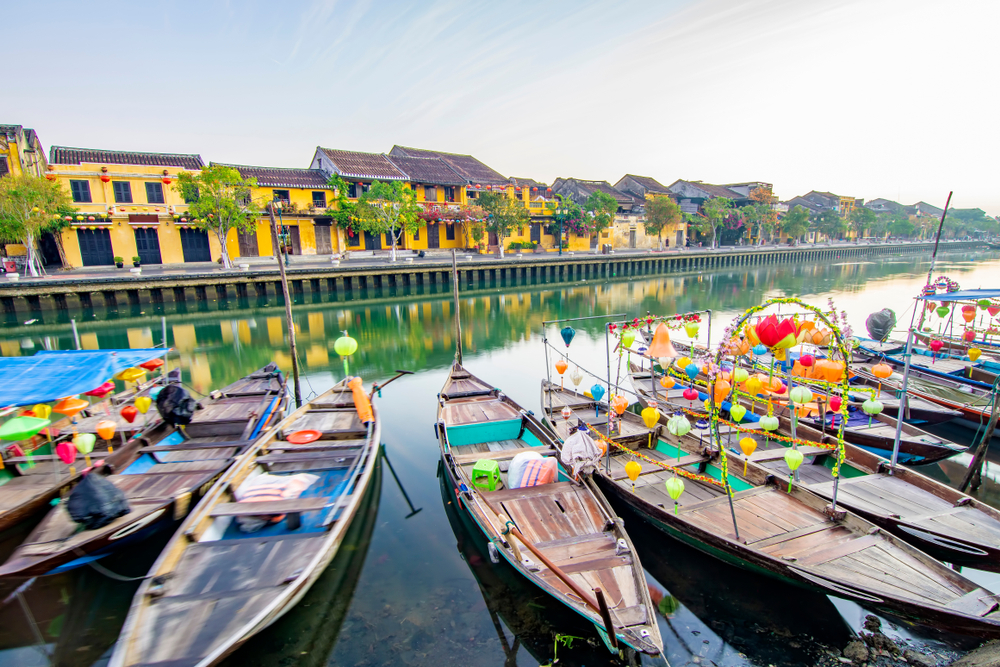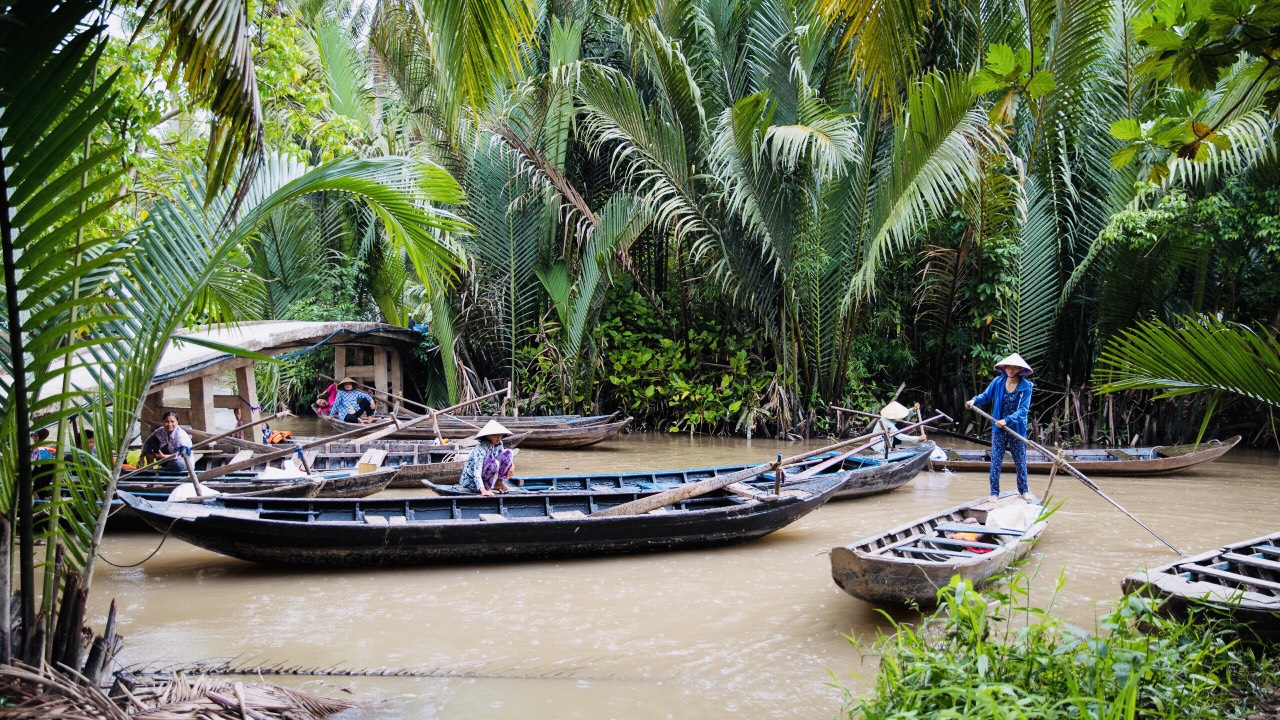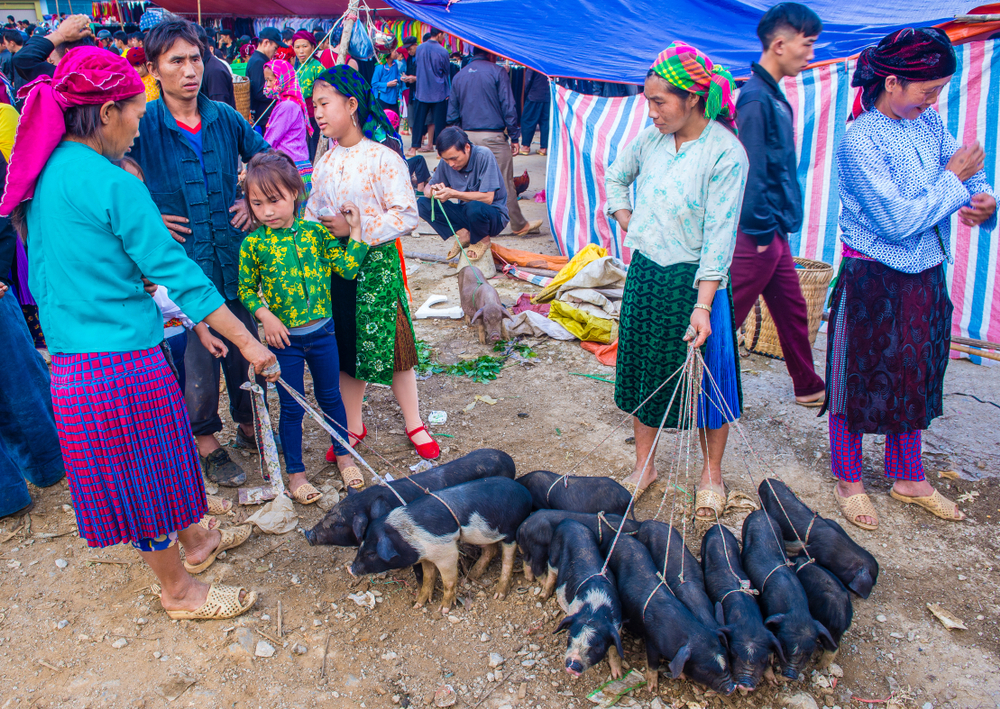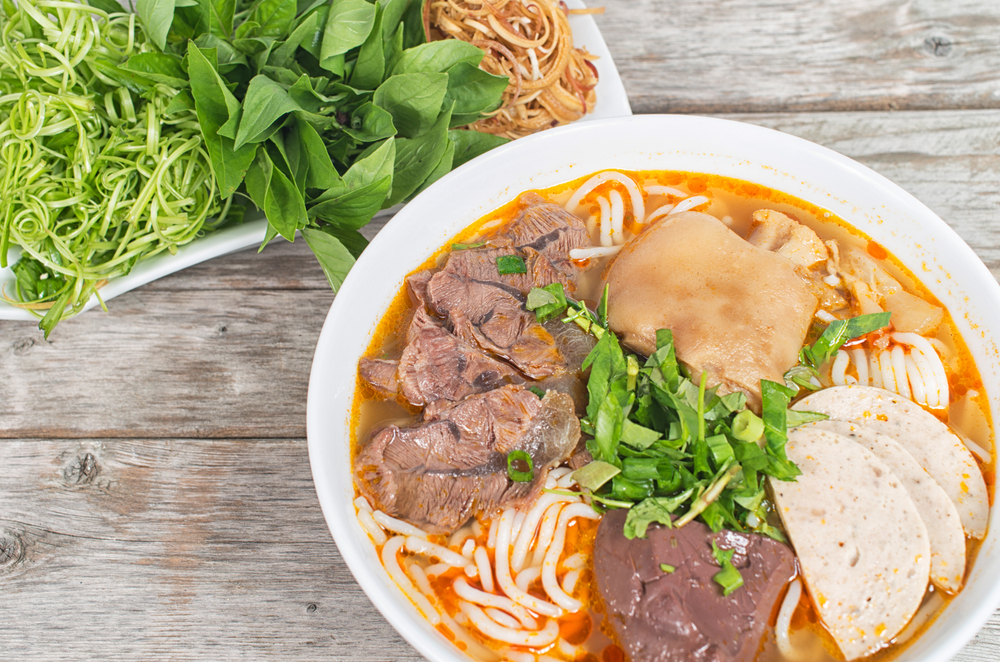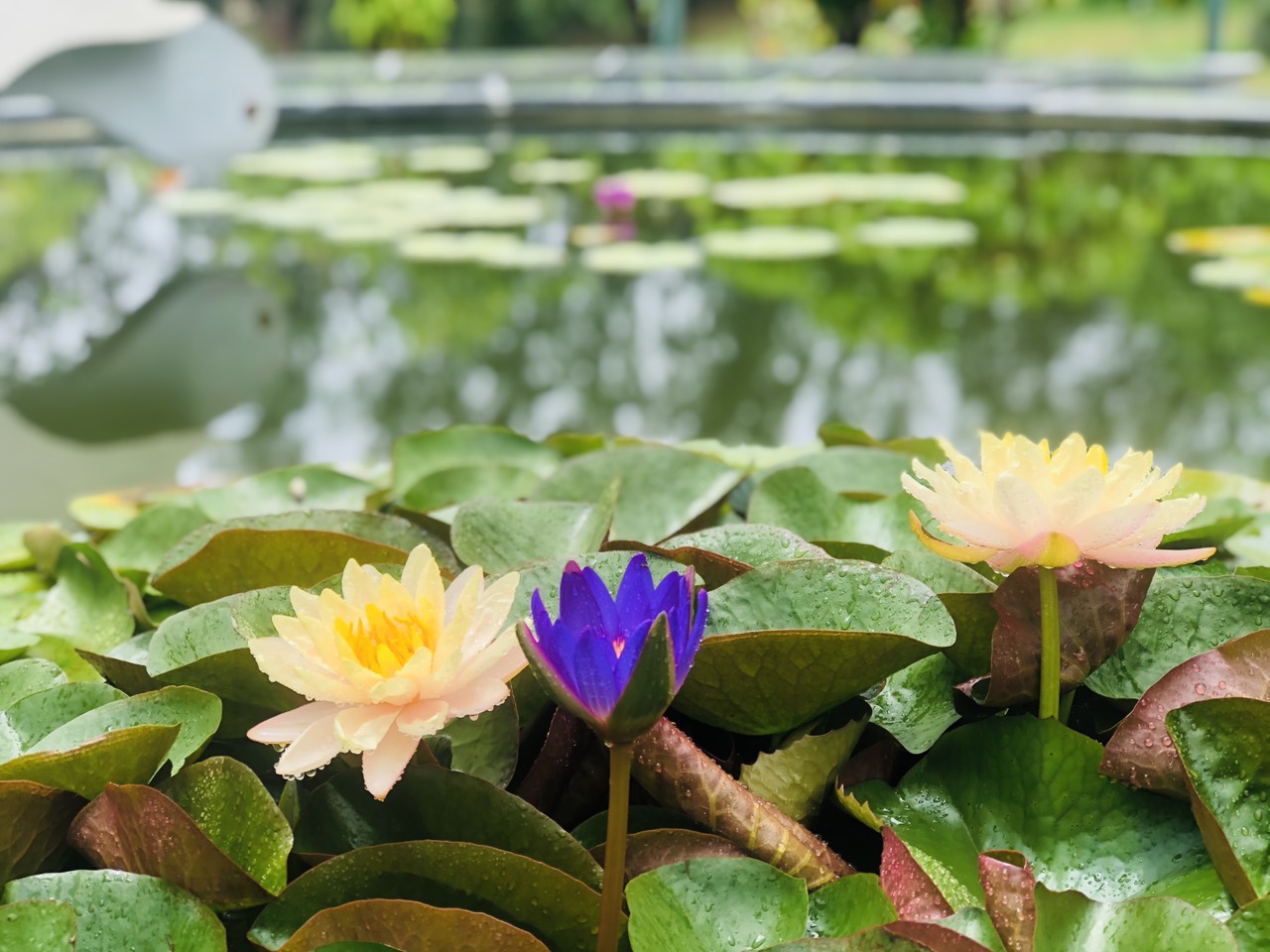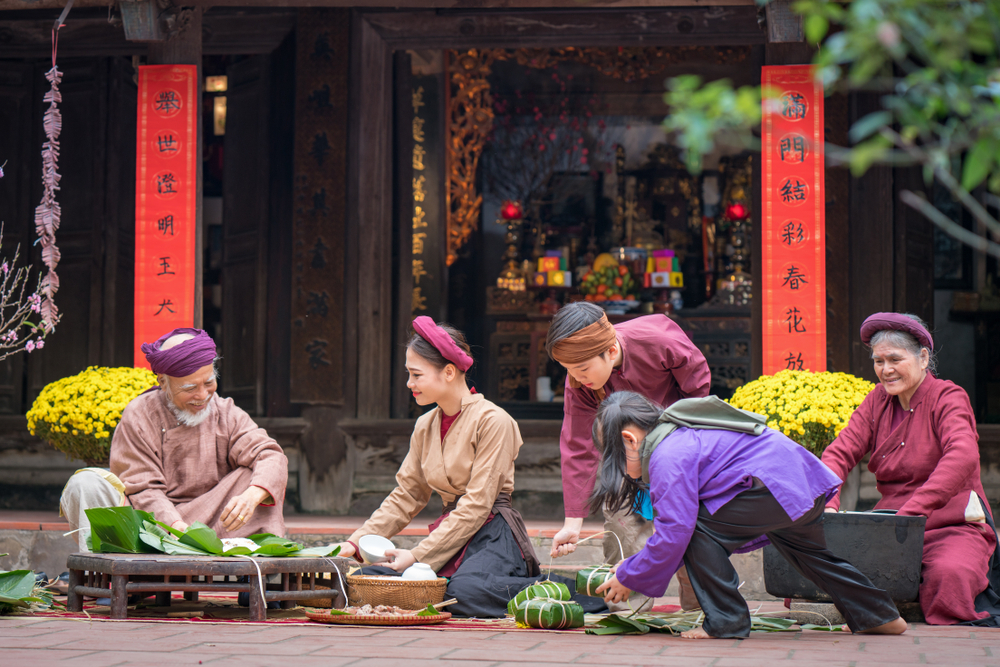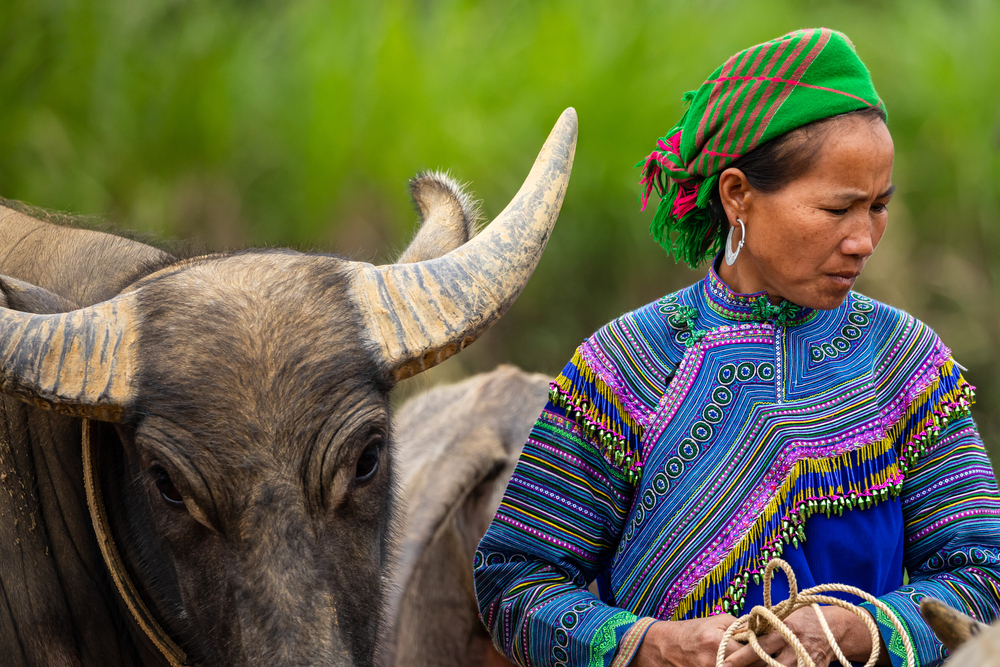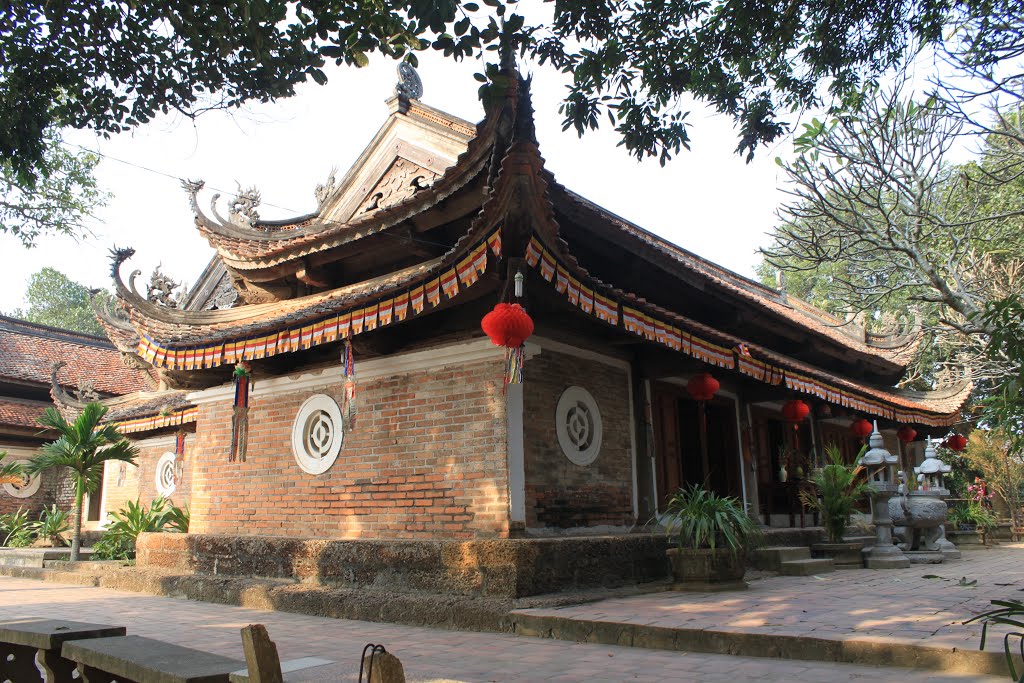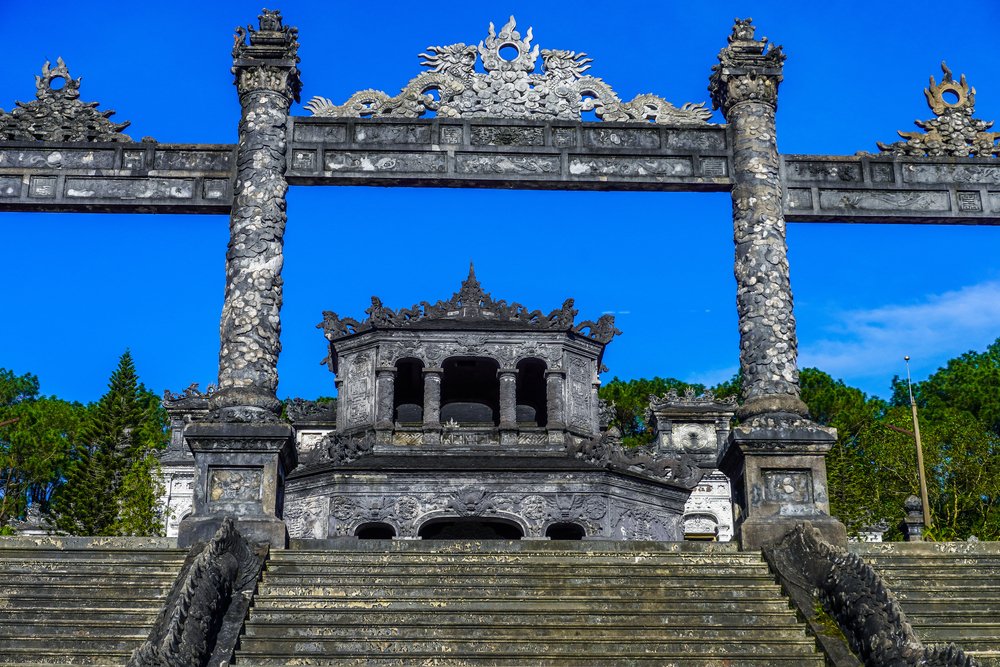
Among hundreds of well-known architectural works in Hue, the royal tombs of the Nguyen kings are very impressive.
Each one is a masterpiece that boasts not only the talent of Hue’s craftsmen, but also the history and particularity of each king.
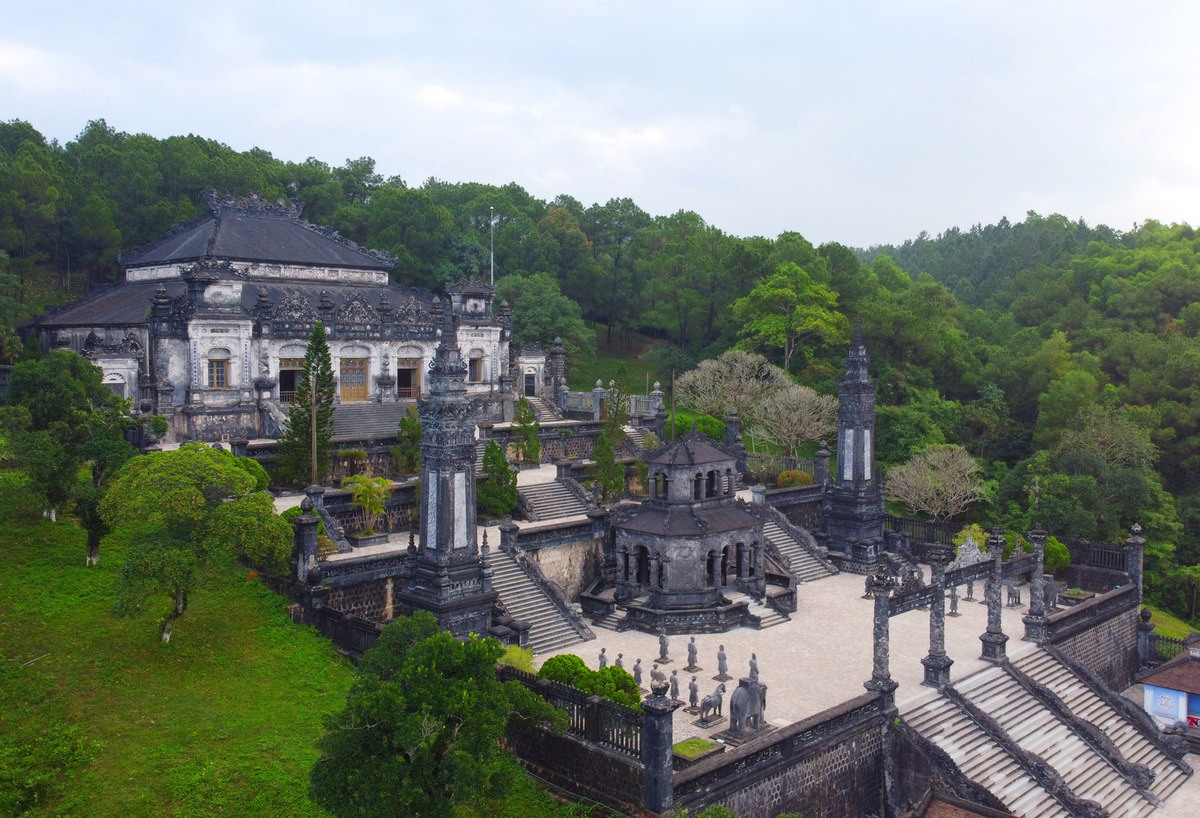
Resulting from the mixture of European and Asian, modern and ancient architectures, Khai Dinh’s tomb has become one of the most popular destinations for foreign tourists during their stay in Hue.
Inspired by tradition, this mausoleum is built in concrete on the slope of Chau Chu mountain, 10 km from the center of Hue. This imperial tomb is small in size, but its architecture, decoration and details are very singular compared to the rest of the tombs of other kings in Hue city. It is the last mausoleum of this type to be built for a member of the Nguyen dynasty (1802-1945).
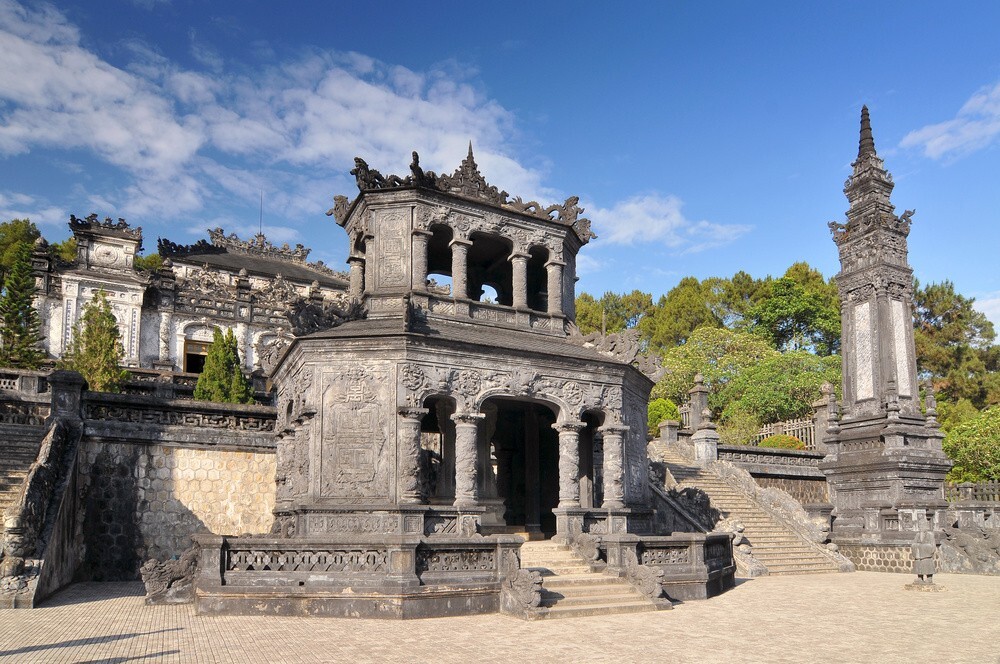
This monument is divided into 3 terraces connected by stairs. At the entrance, to go to the guard pavilions, tourists have to climb the 37 steps with carved dragon-shaped gates.
The second terrace is the court of honor with, soldiers and mandarins, elephants and stone horses, and the stele temple in which the achievements and merits of the king are inscribed. The tomb and memorial halls decorated with mosaics, earthenware and glass shards are located on the third terrace, the highest place.
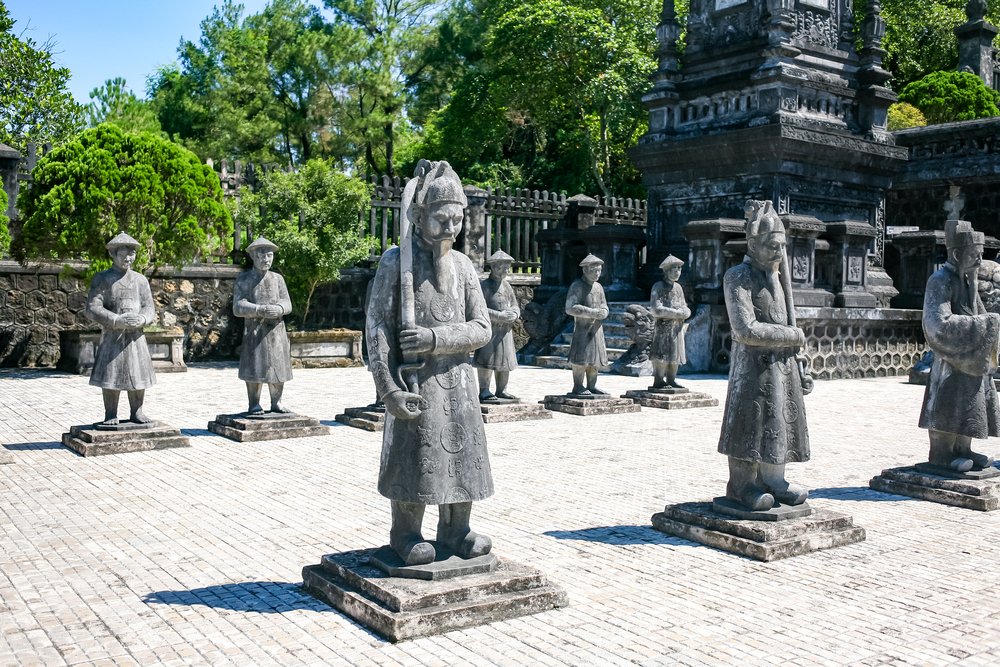
Unlike its predecessors, Khai Dinh’s tomb does not leave any room for nature and gardens in its architecture. But this massive construction is very impressive from the outside.
The interior decoration of Khai Dinh’s tomb is extraordinary. On the ceiling, nine dragons are wriggling in the clouds. The tomb of Khai Dinh is located in the back room of the temple of Thien Dinh. The walls decorated with porcelain and crystal patterns and mosaics are also impressive. One can also see a bronze statue of Khai Dinh designed by the two French architects P. Ducing and F. Barbedienne in 1922.
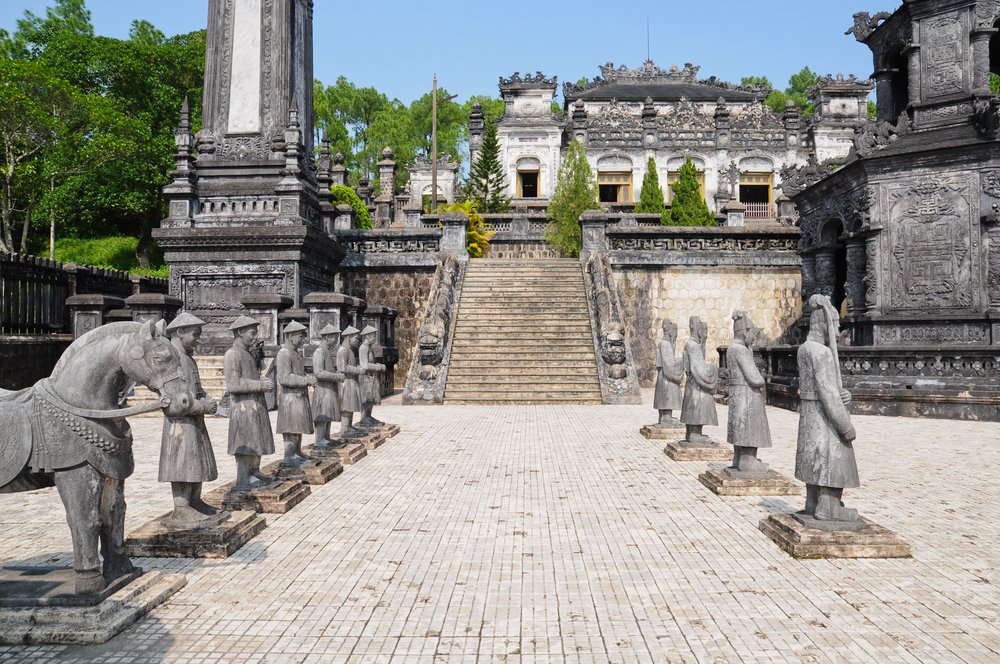 To finance this project, King Khai Dinh increased the property taxes by 30% throughout the country. This decision created the anger of the local population.
To finance this project, King Khai Dinh increased the property taxes by 30% throughout the country. This decision created the anger of the local population.
He decided to build this monument after his trip to France to attend the colonial exhibition in Marseille. Impressed by the European architectural trends, he asked to add Western decorations to this mausoleum.
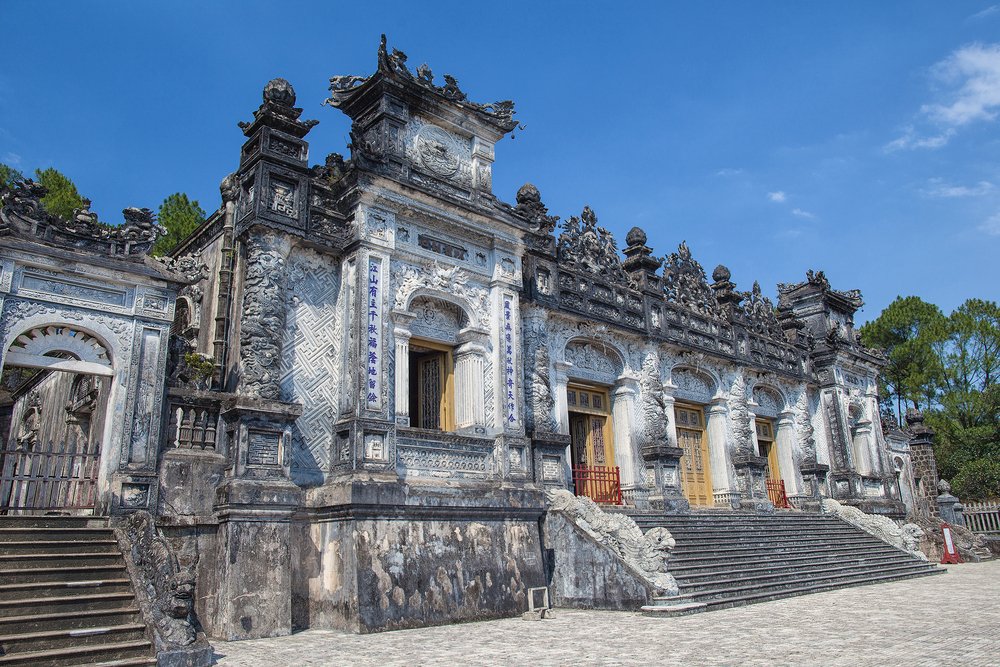
Glass, ceramic shards and colorful mosaics make up elaborate bas-reliefs, masterpieces of 20th century Vietnamese craftsmen.
During your visit, you will see ornaments in the form of fleur-de-lis, wrought iron sculptures and other elements of European art. This building is also a mixture of Gothic, Romanesque, Hindu and Buddhist styles.
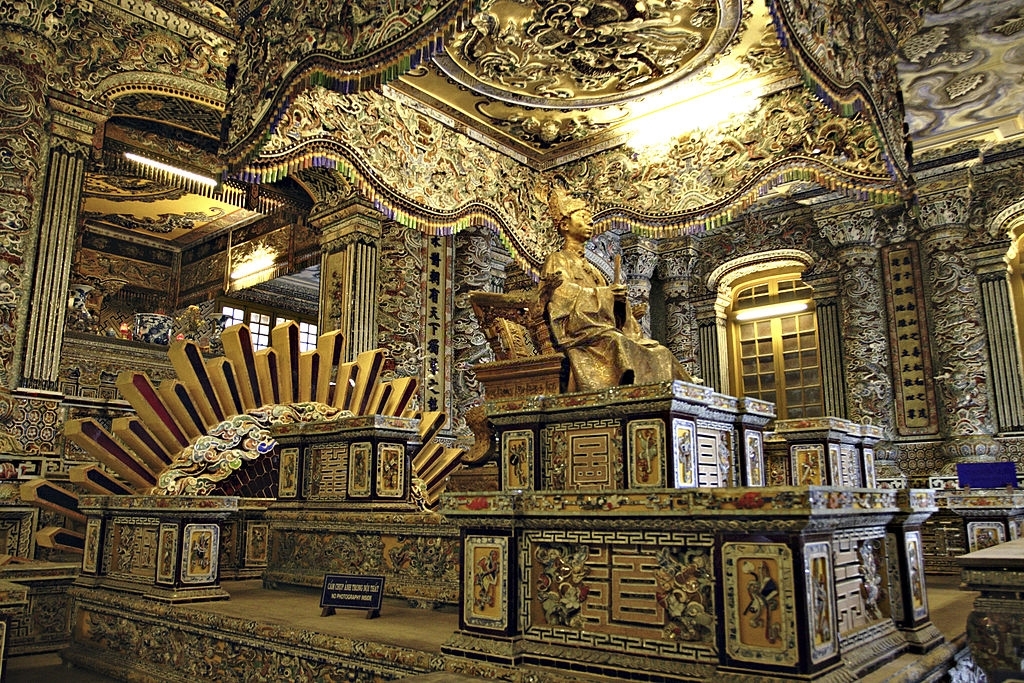
The tomb of Khai Dinh was built during eleven years from 1920 to 1931. Khai Dinh died in 1925, at the age of 40. This mausoleum is not simply a resting place, it is one of the most surprising architectural constructions of the imperial mausoleums.





